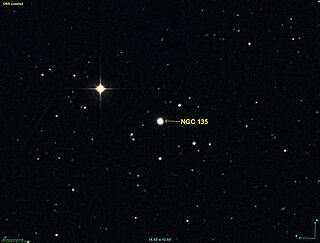
NGC 135 is a lenticular galaxy located in the constellation of Cetus and 335 million light-years away, and 40,000 light-years across.

NGC 4394 is a SBb barred spiral galaxy in the constellation Coma Berenices and is situated about 39.5 million light-years from Earth. It was discovered on 14 March 1784 by the German–British astronomer William Herschel. It is a presumed companion to the lenticular galaxy M85 / NGC 4382, which lies 8 arc minutes away. It is also a member of the Virgo Cluster.
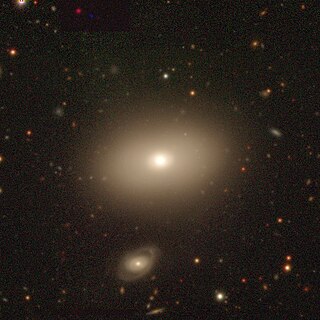
NGC 7302 is a lenticular galaxy located around 124 million light-years away from Earth in the constellation of Aquarius. NGC 7302 was discovered by British astronomer William Herschel on October 3, 1785 and was rediscovered by American astronomer Lewis Swift on August 8, 1896 and was listed in the IC catalogue as IC 5228. It is also part of a group of interacting galaxies.
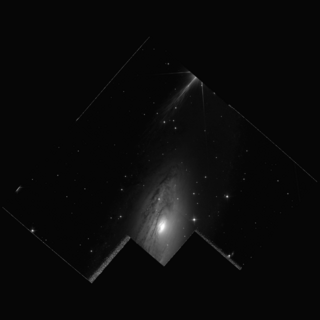
NGC 7013 is a relatively nearby spiral or lenticular galaxy estimated to be around 37 to 41.4 million light-years away from Earth in the constellation of Cygnus. NGC 7013 was discovered by English astronomer William Herschel on July 17, 1784 and was also observed by his son, astronomer John Herschel on September 15, 1828.

NGC 463 is a lenticular galaxy located about 264 million light-years away from Earth in the constellation Pisces. It was discovered by French astronomer Édouard Stephan on December 16, 1871.
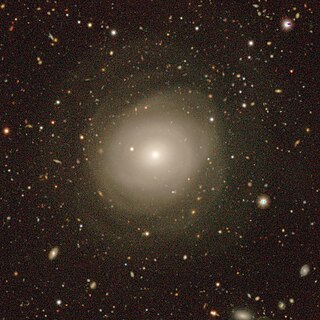
NGC 466 is a lenticular galaxy located about 227 million light-years away from Earth in the constellation Tucana. NGC 466 was discovered by astronomer John Herschel on October 3, 1836.

NGC 7020 is a barred lenticular galaxy located about 140 million light-years away in the constellation Pavo. NGC 7020 was discovered by astronomer John Herschel on August 31, 1836.
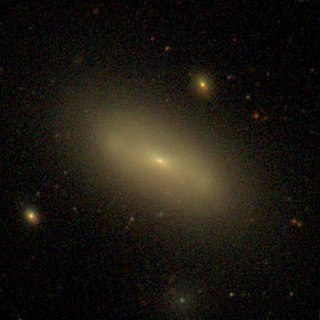
NGC 4497 is a lenticular galaxy located about 60 million light-years away in the constellation Virgo. NGC 4497 was discovered by astronomer William Herschel on March 15, 1784. It was rediscovered by astronomer Arnold Schwassmann on November 8, 1900 and was listed as IC 3452. NGC 4497 is a member of the Virgo Cluster.

NGC 499, also occasionally referred to as PGC 5060, IC 1686 or GC 289, is a lenticular galaxy in the constellation Pisces. It is located approximately 197 million light-years from the Solar System and was discovered on 12 September, 1784 by astronomer William Herschel.

NGC 4895 is a lenticular galaxy located 330 million light-years away in the constellation Coma Berenices. The galaxy was discovered by astronomer Heinrich d'Arrest on May 5, 1864 and is a member of the Coma Cluster.

NGC 655 is a lenticular galaxy located 400 million light-years away in the constellation Cetus. It was discovered in a sky-survey by Ormond Stone on December 12, 1885.

NGC 530, also known as IC 106, is a lenticular galaxy in the constellation Cetus. It is approximately 226 million light years from the Milky Way and has a diameter of around 100,000 light years. The object was discovered on November 20, 1886, by the American astronomer Lewis A. Swift, who listed it as NGC 530, and rediscovered on November 16, 1887, by Guillaume Bigourdan, who listed it as IC 106.
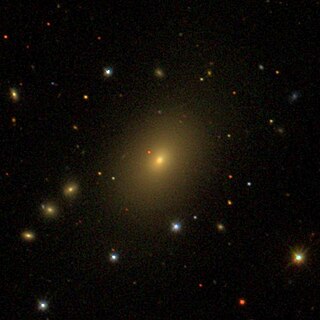
NGC 2484 is a large lenticular galaxy located in the Lynx constellation. It is situated 560 million light-years away from the Milky Way, which given by its apparent dimensions, means NGC 2484 is around 304,000 thousand light-years across. It is classified a Fanaroff and Riley radio galaxy.

NGC 2491 is a spiral galaxy located in Canis Minor constellation. It is located 580 million light-years from Earth and has an approximate diameter of 130,000 thousand light-years.

NGC 2485 is a spiral galaxy located in the constellation of Canis Minor. It is located 233 million light-years away from Earth and has an estimated diameter of 110,000 thousand light-years. NGC 2485 was discovered on March 25, 1864, by Albert Marth and has an approximate surface magnitude of 13.08.
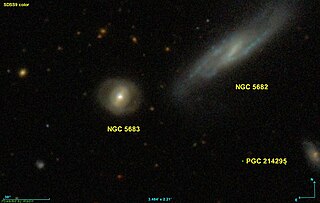
NGC 5683 is a type S0-a lenticular galaxy with a bar located in the Boötes constellation. It is 513 million light-years away from the solar system and has an approximate diameter of 256,000 thousand light-years meaning it is larger compared to the Milky Way. NGC 5683 was discovered by George Johnstone Stoney on April 13, 1850.
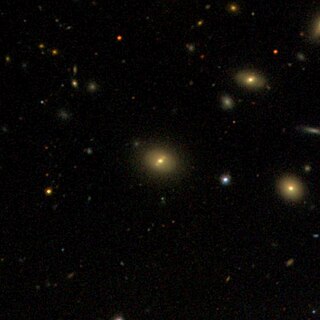
IC 4026 is a type S0 lenticular galaxy with a bar located in Coma Berenices. It is located 315 million light-years away from the solar system and has an approximate diameter of 70,000 thousand light-years which is less the size of the Milky Way. IC 4026 was discovered on May 11, 1896, by astronomer Hermann Kobold and is a member of the Coma Cluster. It has a surface brightness of 11.99 mag/arcsecs meaning it is a high surface brightness galaxy.

NGC 3750 is a lenticular galaxy with a bar located in the constellation of Leo. It is located 450 million light-years from the Solar System and was discovered by Ralph Copeland on February 9, 1874.

NGC 3748 is a lenticular galaxy with a bar located in the Leo constellation. It is located 440 million light-years away from the Solar System and was discovered by Ralph Copeland on April 5, 1874, but also observed by Hermann Kobold, Lawrence Parsons and John Louis Emil Dreyer.

NGC 3751 is a type E-S0 lenticular galaxy located in the Leo constellation. It is located 450 million light-years away from the Solar System and was discovered by Ralph Copeland on April 5, 1874.


















